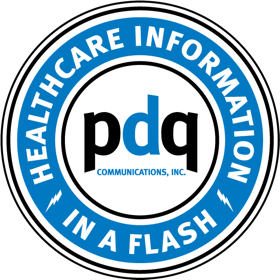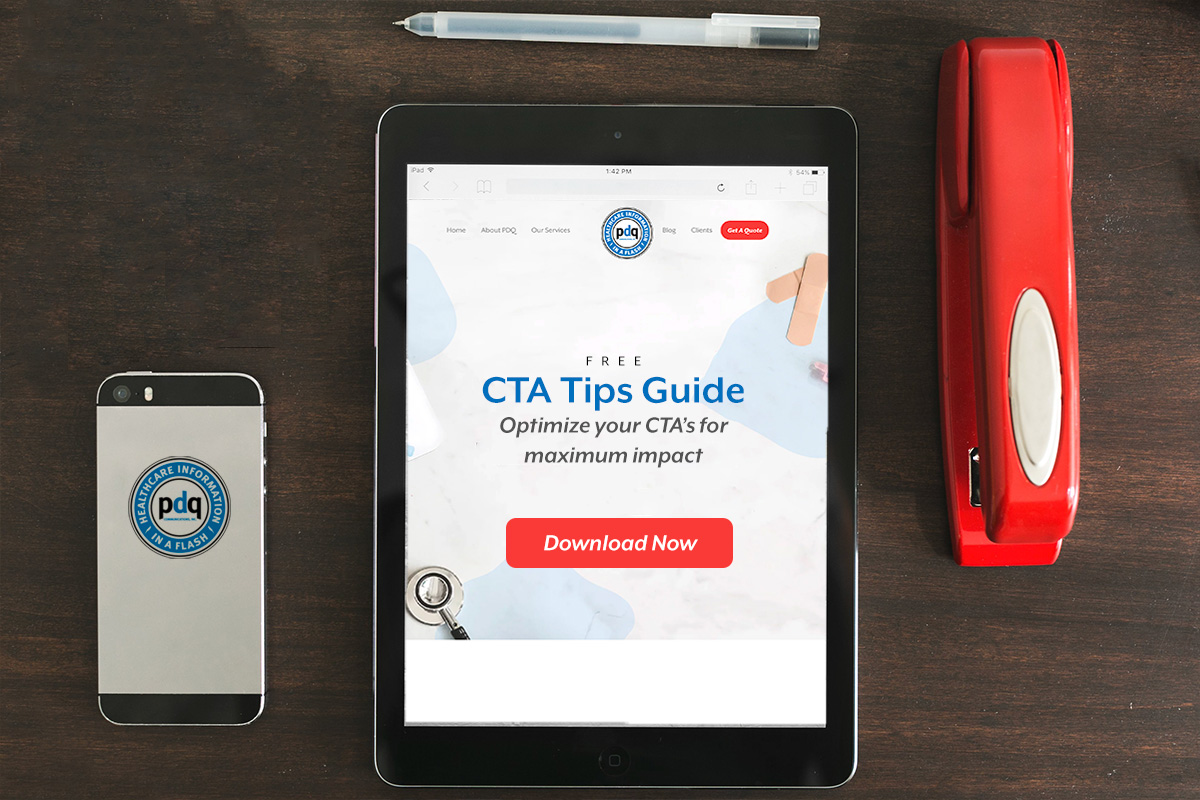When introducing a new product or service, how can you ensure users are moving toward the...
Conveying a message that will resonate with healthcare professionals (HCPs) must include specific, clear elements that go one step further than a typical email marketing campaign.
The reason is two-fold: Healthcare is dominated by various regulations and requirements, and the messaging must adhere to these. And, HCPs have led the mainstream shift toward digesting email and/or marketing communications in a non-traditional desktop or laptop setting. This is mainly due to the brief downtimes dictated by the nature of their profession.
Taking into consideration these aforementioned elements, and ensuring content will resonate with your audience can be a tall order. Including an effective CTA with an actionable request prompts your audience to do something. It also demonstrates taking an extra step to provide a value-add content piece for more information.
Below we’ll discuss tips and best practices to incorporate into your CTA that can lead toward opens, clicks, and eventual purchases.
Be Clear, Concise & Specific
Being clear, concise, and specific is a CTA best practice within any industry, but it’s even more important when targeting busy HCPs. Ensuring the user understands which specific action you want to convey to move them down the sales funnel eliminates their uncertainties prior to taking this next action.
For example, when including your specific CTA, instead of saying: Get the White Paper or Look at Our e-Newsletter, it’s more effective to state the obvious, such as: Download the White Paper Now, or Subscribe to Our e-Newsletter Here.
If you want to gain immediate attention—especially with HCPs—the wording on your CTA should have the following:
- No more than 35-40 characters. Don’t include lengthy information. Saying more with less is key, and this should be reflected on your CTA button prompt.
- Clear, easily digestible information. While you might understand what you’re trying to convey, it’s important to explain exactly what your offer is, and what the user will receive upon clicking.
- Specifics. Any uncertainties within your messaging might cause confusion and questions, dissuading the user from clicking.
Placement
Similar to the expression in newspaper publishing, above the fold is also a digital publishing and email marketing reference, to content appearing at the top of the user’s browser window on a web page or within an email message.
It’s best to place your CTA above the fold so it’s readily visible for quick viewing. If your HCP user can’t locate the CTA or understand where to click—if it’s buried at the bottom of the fold, for example—they’ll be less likely to do so.
Optimizing a CTA for mobile devices must also be configured for various screen sizes, email clients and mobile device type/brand. Because users typically view content on portrait view rather than traditional landscape mode, it must be optimized.
This is where responsive design comes into play. For this reason, there’s no set template or page layout. The content simply reflows to any size screen, or responds to the browser environment in which it’s being viewed.
As aforementioned, it’s important to optimize your most important actionable points, such as your CTA, above the fold. While desktop/laptop computers are not utilized as much as mobile devices, it’s still important to note, as there could be times when an HCP will view your messaging this way.
Determining the above the fold position here will differ based on screen laptop/desktop size, resolution and browser. According to customer experience optimization software provider Optimizely, “most web designers agree that the fold line is approximately 1,000 pixels wide and 600 pixels tall.”
It’s important to optimize your most actionable points, such as your CTA, above the fold.
A/B Testing
When it comes to email marketing, a CTA is one of the items in which A/B testing can be utilized. This is one of the most versatile tools, because it can be used to test specific engagement levels, such as click-throughs, amount of form submissions, how your CTA is worded, or the content offering itself.
Begin by choosing a random segment of your list and breaking it into smaller ones with different test elements. This could be how the CTA is worded, where it’s positioned, or the type of offer you’re providing.
It’s important to deliver your different CTA test versions for at least a day to manage consistency, as well as response. Each list variation must be run at the same time, on the same day, so that you’re not receiving inconsistent results. However, if you’re running an A/B test to determine the best day to send an email, then this tactic wouldn’t apply.
Once you’ve delivered the different CTA versions using your randomly segmented lists, it’s time to analyze your key performance indicators, such as opens and click-throughs.
Deliver your different CTA test versions for at least a day to manage consistency, as well as response.
Did more users click on the CTA that had a specific wording than another? Maybe they preferred a blue CTA button rather than red? The end goal is to see what’s resonating best, and then incorporating all of these elements into your campaign for highest engagement levels.
Crafting the Message
You’ve digested and learned these helpful tips, and you’re ready to develop an effective CTA that will resonate with your HCP audience. If you have specific questions, or require guidance on any of these aforementioned elements, it’s helpful to consult a professional email marketing campaign specialist who can eliminate any what ifs you might have.








